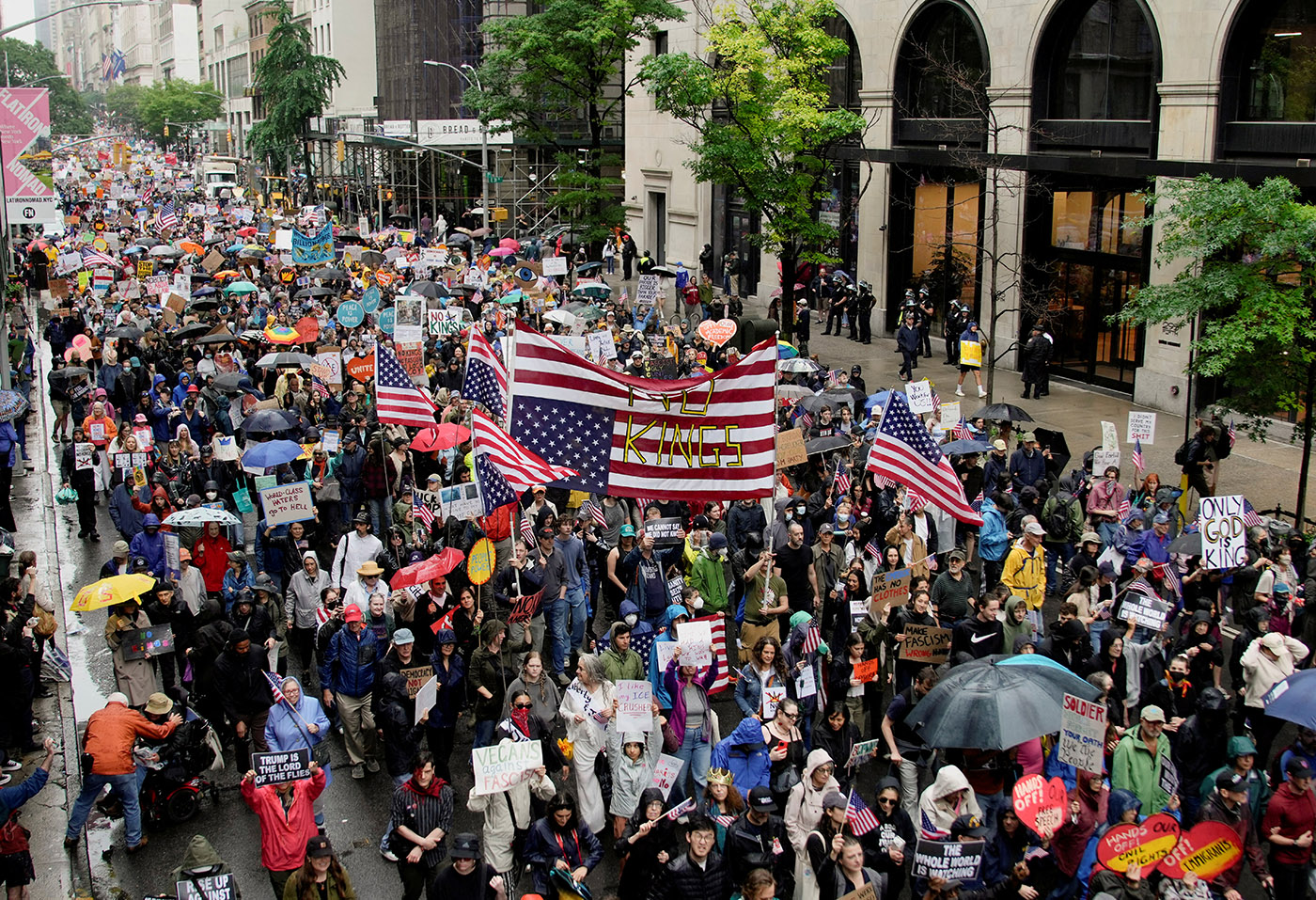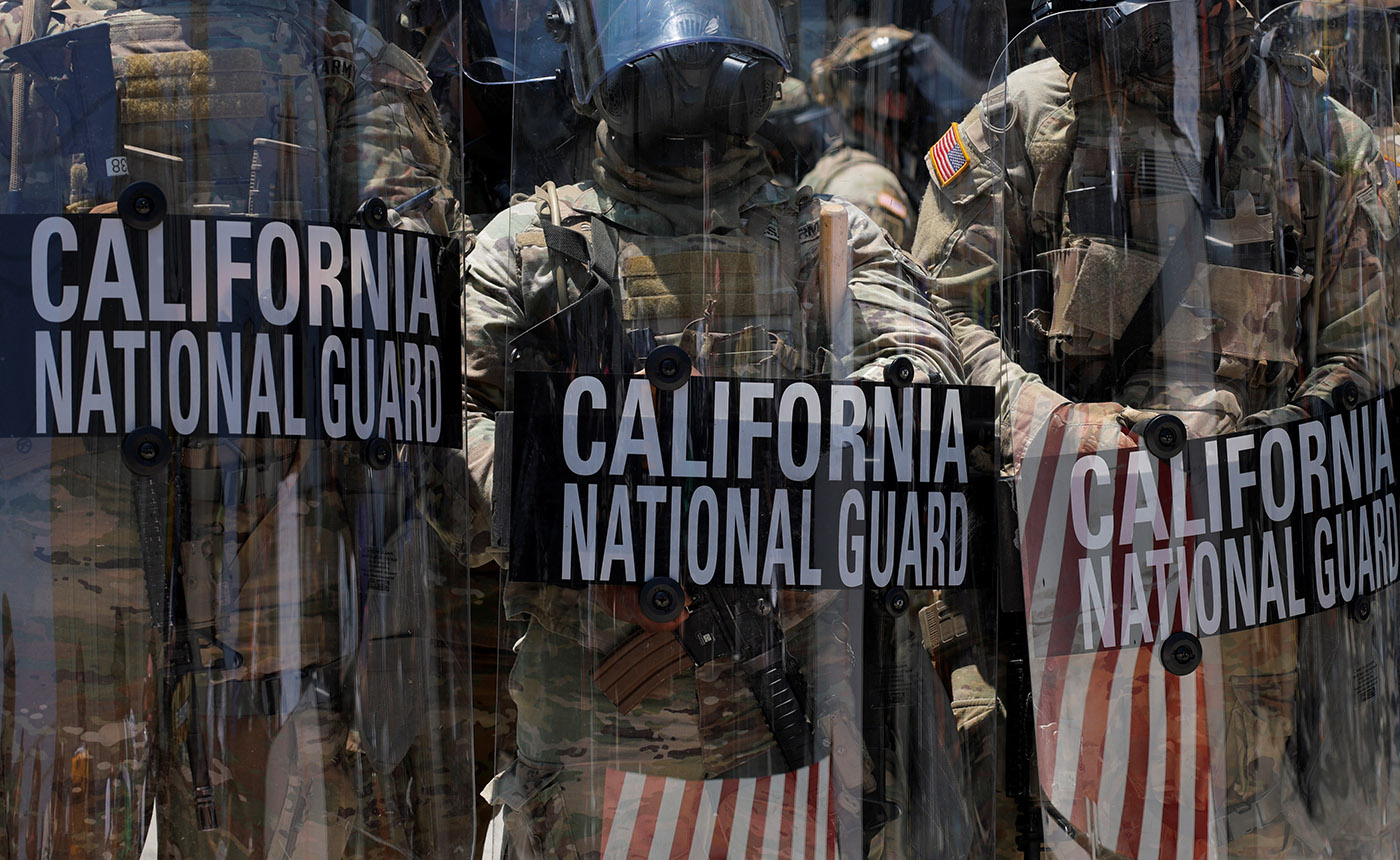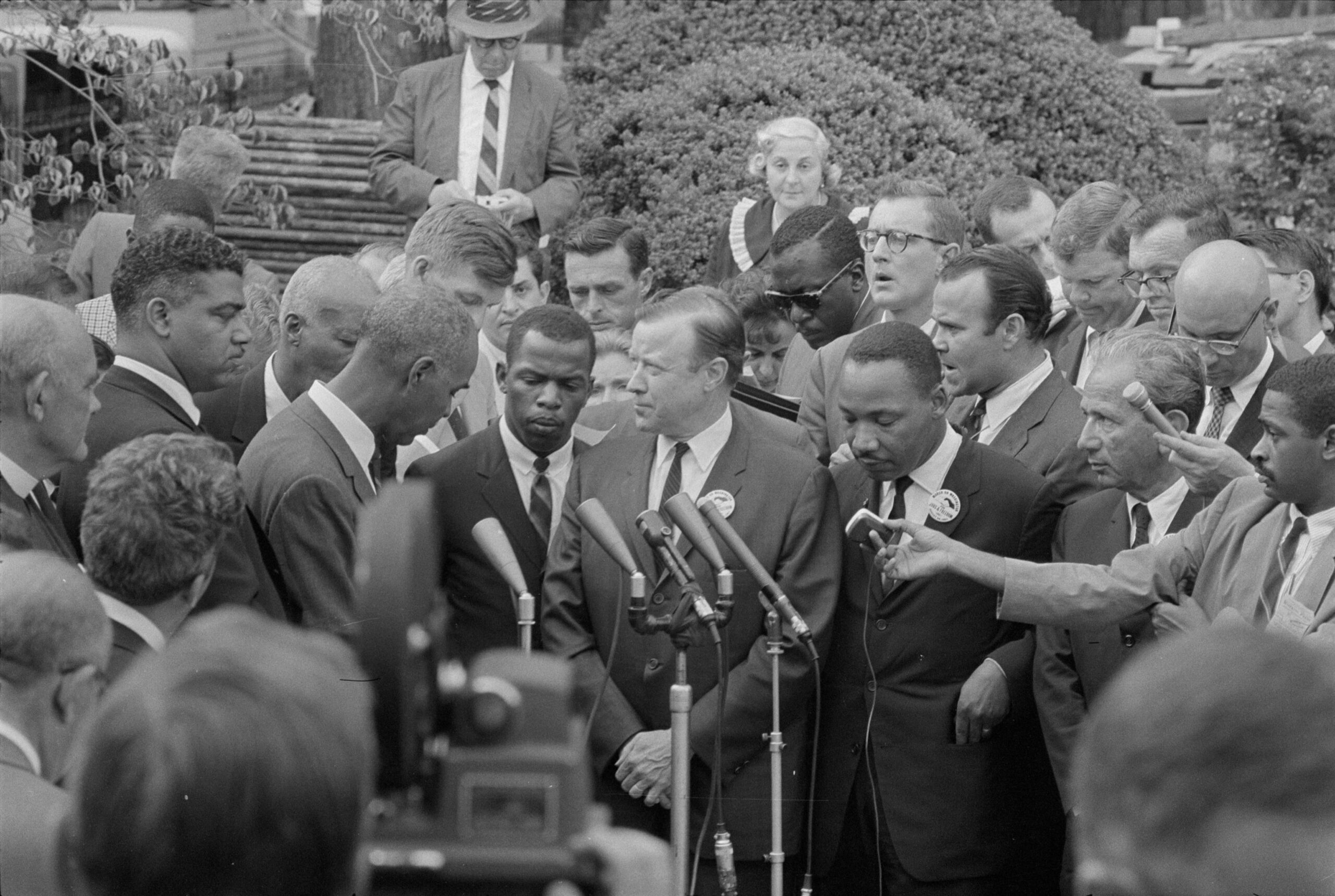In her latest book, “A Protest History of the United States,” constitutional law professor Gloria J. Browne-Marshall wrote: “To live under siege and still thrive and find joy, despite the oppressive and unnatural conditions of this country, is an immeasurable victory.”
Browne-Marshall examined the history of protest movements in the United States, including indigenous people’s rebellion to European colonization, the Civil Rights Movement, labor union uprisings, anti-war marches, women’s suffrage and more recent instances of demonstrations over violent policing and climate change.
Her book, published in April, comes at a time of increased protest activity. In its annual report, the U.S. Press Freedom Tracker described 2024 as a “protest year,” highlighting the pro-Palestinian campus encampments and demonstrations on college campuses. The distinction was also assigned to 2020 and 2021, amid the racial reckoning following the killing of George Floyd by police. But the report was released before the inauguration of President Donald Trump, whose administration has seen an increased protest presence across the country, including millions joining “No Kings” demonstrations protesting the president last month.
“The United States of America is made better when her people demand better,” she wrote. “One needs to learn about the protests that secured the liberties enjoyed daily, even as the nation fails to recognize the awful price paid to gain them.”
In an interview with First Amendment Watch, Browne-Marshall discussed the criminalization of protest despite First Amendment protections, why protesters need to find ways to maintain their message and influence public opinion, and how the media can negatively influence a protest narrative.
Editor’s note: This interview has been edited and condensed for length and clarity.
FAW: We’re familiar with the protests of the last ten years, such as Black Lives Matter and #MeToo. But what does your study of American history teach us about the strategies that have been most effective in gaining attention to grievances and bringing change?
Browne-Marshall: I think there are ways in which I would say the history of strategically poised protests can shed light on the protests today that are not being considered. First, the leaders studied the opposition. They spent time trying to find the weaknesses, the strengths, examining their arguments, so that they could come up with protests that would meet the need and be able to counter the oppression that they faced. I think that’s one of those strategies that’s being missed here. I don’t see people really studying, and maybe I’m just not in the circle where the studies are taking place, where people are actually examining how this regime, in particular, or any oppression that they believe is taking place, is happening, why it’s happening. That’s the other part. What is it that these people want? The opposition, the oppression, the oppressors. What do the oppressors want? Whether or not it’s the government or it’s a business, a corporation, if they’re anti-union, what is it that the corporation has that they want to maintain that they feel is threatened by having a union? So studying these things, I think would be something that’s very important.
I think also the idea that the emotional trigger in the very beginning is something that’s important, but there’s also a need for messaging that has to sustain the movement. The protests can come, for example, with the murder of George Floyd, with the women who came forward, who had been accosted and assaulted in Hollywood. Now, how do you sustain the movement outside of the initial outrage and the outputting of emotion? I think that was very important that I saw in my research, that they had to channel that anger and that emotion, keep it alive, but also it had to be funneled in a way that was used to maintain momentum and carry a message. And I think what I would say most recently is that I see the emotion, which is important, but where’s the message? And the message has to be not just anti the oppression, but what is the group wanting? What are they for? Because this is one factor that I think is very important. If the government or corporation, a business, whatever, that is acting in a way that oppresses another group, that oppressor is looking to have a world based on their image, their ideology. So if there’s a countering ideology, we need to know what it is. We need to know what the other side of the message is. For example, today we see “No Kings.” We don’t want “King,” we want [blank], and so my message is democracy, or we have to look at the core of what’s happening right now. And I believe, through my research, that what we’re seeing taking place in our country is based on the fact that by the year 2045 this nation is going to be majority people of color. So these strategies — voter suppression, deportation, the undermining of diversity, equity and inclusion — these tactics to take away the contributions of people of color, is to lay the foundation for an apartheid type state by the time we get to 2045 so that even if the population does increase enough to make the white population be the minority population in the country, the power is still going to be in the hands of an older white male patriarchy. And so I think that if we don’t study that to figure out what they’re doing, why they’re doing it, how they’re doing it, then I think the protests then are not as effective as they could be, because the emotional part of the protest is going to get only so far, and the messaging has to be something that brings in outside people.
It has to influence the outside public, beyond those people who are protesting, and that’s why having the message is so important, so that it can influence people who are not protesting. And of course, protest takes many different forms. It’s not just the protest in the streets with the signs. There are all different types of ways to protest. And so those different mechanisms for protest can then have different ways to influence the outside viewer, and so that person can also do what they can where they stand without actually being seen on the street. So influencing public opinion is also something that the protest is supposed to do, not just get the protesters emotional, anger or thoughts out, but also influence the thoughts of others.




